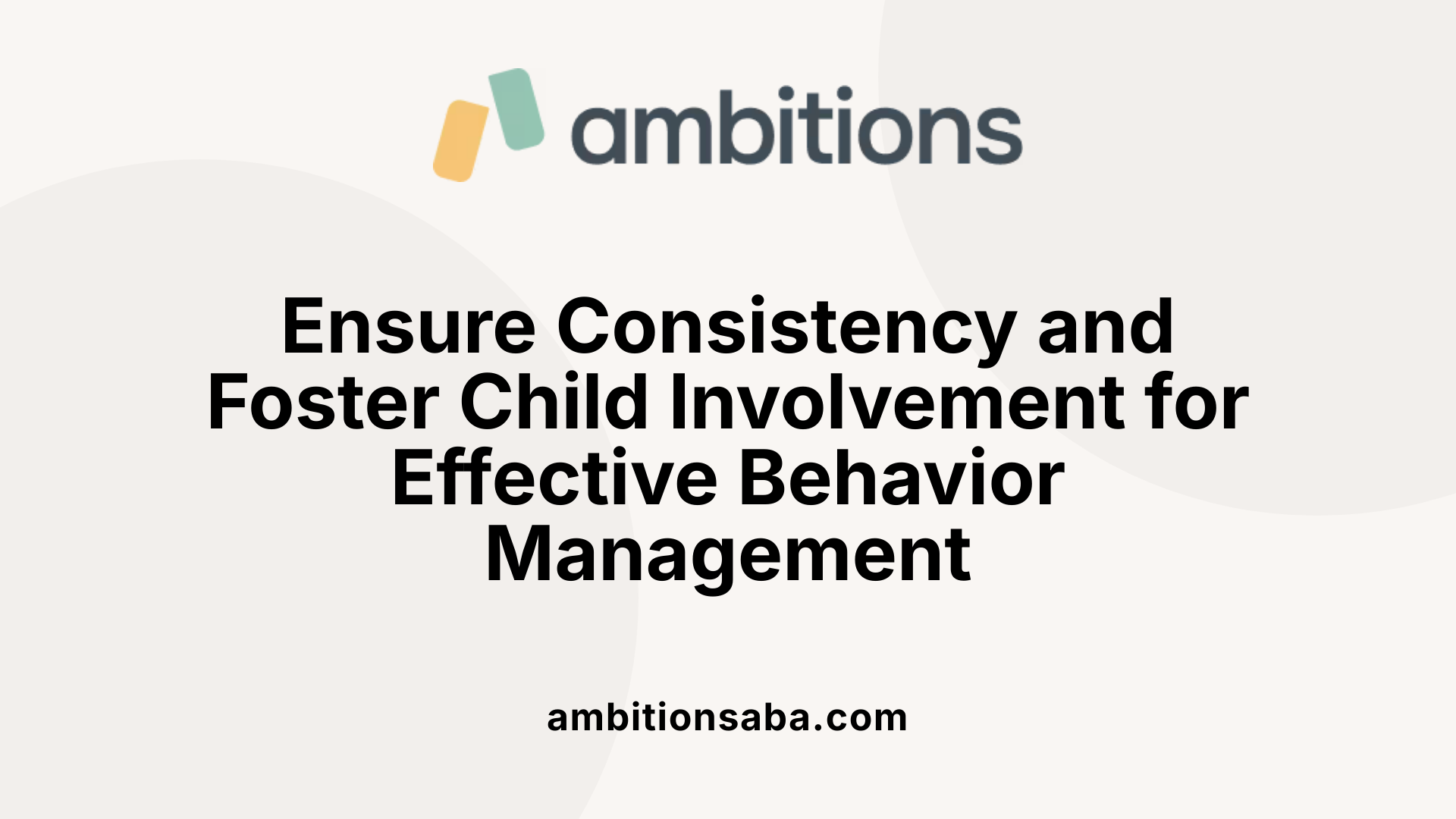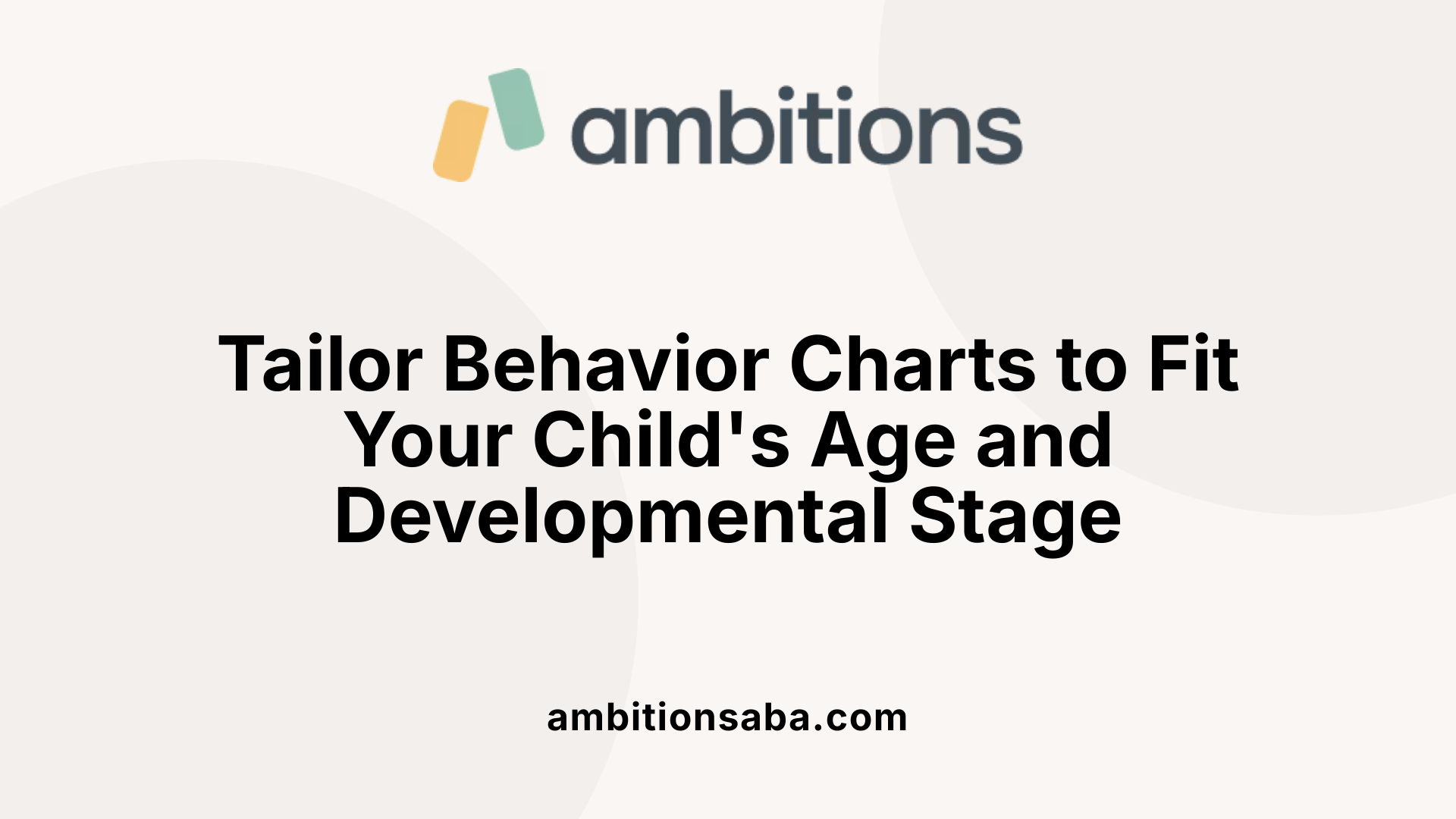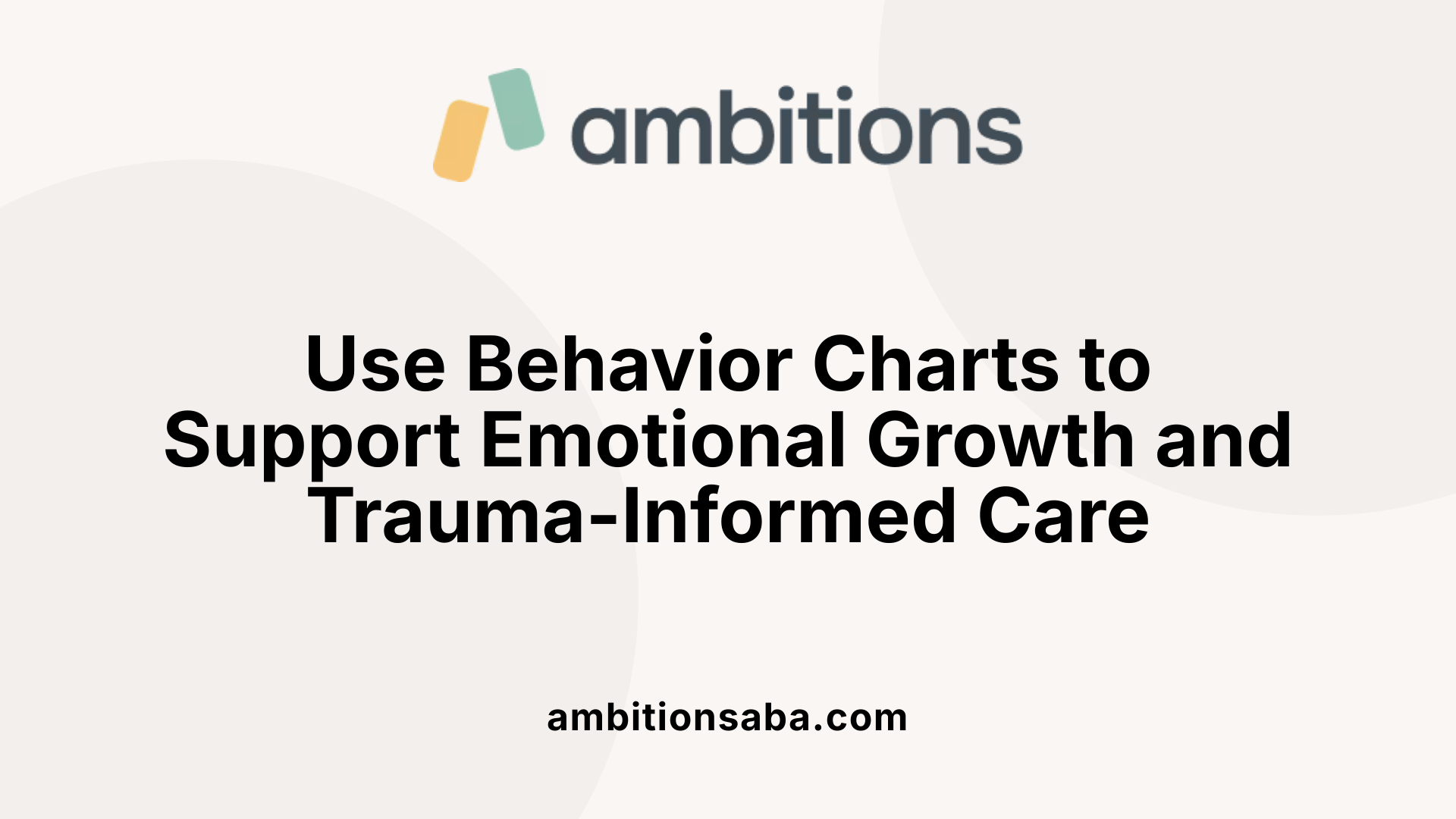Setting the Foundation for Successful Behavior Charts
Creating a behavior chart that works at home involves careful planning, understanding your child's unique needs, and implementing consistent, positive reinforcement strategies. When designed thoughtfully, behavior charts can transform routines, encourage positive habits, and foster emotional growth, all while making the process engaging and supportive.
Choosing the Right Behaviors and Goals for Your Child
What are effective strategies for designing behavior charts to promote positive behavior?
Designing an effective behavior chart starts with selecting a few specific behaviors that you want your child to develop or improve. It’s best to focus on 2-3 behaviors at a time, such as saying ‘please’ or tidying up toys, to avoid overwhelming your child.
Goals should be realistic and suited to the child’s developmental level. For younger children, simple tasks like brushing teeth or putting away shoes work well. Clear expectations are essential—use concrete language and visuals like stickers or stars to mark accomplishments immediately after the behavior.
Involving the child in the goal-setting process is highly beneficial. When children help choose their targets and rewards, they are more motivated and invested in the process.
Use positive reinforcement by rewarding desired behaviors with rewards that are meaningful to the child. These can include extra bedtime stories, stickers, or privileges like a movie night or out with friends. Visual cues such as characters like Spiderman or frogs can make the charts more engaging.
Maintaining consistency is critical. Start the day with positive interactions, and gradually phase out frequent use of the chart as behaviors become habitual.
Regularly review the chart’s effectiveness and adjust goals or rewards if needed. This flexibility helps keep your child motivated and addresses changing needs.
Finally, integrating trauma-informed strategies and ensuring goals are achievable and positive supports children with diverse needs, including those with attention difficulties. With these approaches, behavior charts can foster positive habits while making the process enjoyable for your child.
Designing Visual and Reward Systems That Motivate
Using engaging visuals can make behavior charts more appealing and easier for children to understand. Stickers, stars, or colorful images serve as visual markers of effort and achievement, reinforcing positive behaviors effectively. For example, decorating charts with fun stickers or themed images like frogs or Spiderman can excite children and motivate them to participate.
Choosing appropriate rewards is crucial and should match the child's age and personal interests. Simple rewards like extra bedtime stories, movie nights, or privileges such as going out with friends tend to resonate well with children. For older kids, tangible incentives like gift cards or extended screen time can be particularly motivating.
Displaying these rewards visibly is vital for maintaining motivation. When children see their rewards clearly, they are more inclined to work toward earning them. Placing reward charts and reward descriptions in common areas ensures that children constantly have a visual reminder of their goals.
Furthermore, the rewards must be meaningful and attainable. Small, immediate rewards—such as stickers or family activities—are effective in encouraging consistent effort. Ensuring that the goals and rewards are realistic prevents frustration and helps children experience success, fostering a positive attitude toward behavioral goals.
Finally, resources and templates for creating these visual and reward systems are widely available online. Many free printable charts, customizable digital templates, and online tools cater to all ages and purposes, making it easier for parents and educators to tailor the visual and reward systems to their child's needs. These templates often include character themes, graphics, and sections for tracking behaviors, alongside ideas for effective reward strategies.
Understanding and Implementing Consistency and Involvement
 To effectively use behavior charts at home, it is crucial to maintain consistency across all caregivers and routines. Consistent application ensures that children understand expectations and know what behaviors will be reinforced. Everyone involved should follow similar rules and reward structures to avoid confusion.
To effectively use behavior charts at home, it is crucial to maintain consistency across all caregivers and routines. Consistent application ensures that children understand expectations and know what behaviors will be reinforced. Everyone involved should follow similar rules and reward structures to avoid confusion.
Involving children in designing and decorating their charts increases their sense of ownership and motivation. Let them choose stickers, colors, or themes that appeal to them, making the process fun and engaging. This participation encourages children to take responsibility and feel empowered in their behavioral improvement journey.
Regular review and adjustments are vital parts of an effective behavior chart system. Observe how well the goals are being met over time—typically every 2-3 weeks—and modify the chart or rewards accordingly. If certain behaviors aren’t improving, consider breaking goals into smaller, more achievable steps. As progress is made, phase out the chart gradually to help sustain positive behaviors without reliance on external motivators.
Using positive language and celebrating small victories make the process more encouraging. Compliment efforts immediately after the desired behavior occurs, such as saying, “Great job picking up your toys!” Small wins motivate children to continue practicing good habits. Recognizing efforts rather than only outcomes builds self-esteem and reinforces perseverance.
Overall, a supportive, consistent, and collaborative approach to behavior charts helps foster positive development and creates a nurturing environment where children learn and grow confidently.
Adapting Behavior Charts for Different Ages and Needs
 When using behavior charts for children, it's essential to tailor them to match each child's age, developmental stage, and individual needs. For young children, visual tools like colorful stickers, star charts, or charming characters such as frogs or Spiderman make tracking behavior engaging and easy to understand. These simple visual aids give immediate feedback and help young kids recognize expectations.
When using behavior charts for children, it's essential to tailor them to match each child's age, developmental stage, and individual needs. For young children, visual tools like colorful stickers, star charts, or charming characters such as frogs or Spiderman make tracking behavior engaging and easy to understand. These simple visual aids give immediate feedback and help young kids recognize expectations.
For older children and adolescents, more sophisticated systems like point or token economies, digital charts, or apps work better. These systems offer more autonomy and can include longer-term rewards, encouraging responsible decision-making. Using charts that align with their interests—like earning gift cards or privileges—motivates sustained positive behavior.
Adjustments should also be made in the number of behaviors targeted at once. For children who find multiple goals overwhelming, focusing on 2-3 specific behaviors per month ensures manageable progress. Rewards should be meaningful; for young children, extra bedtime stories or stickers work well, while older kids might prefer longer screen time, outings, or small gifts.
Incorporating trauma-informed strategies is crucial when necessary. This involves creating a supportive, non-punitive environment that respects the child's emotional needs. Consistently involving the child in decorating or personalizing their chart fosters ownership and motivation.
Overall, continuous review and flexibility are vital. Adjusting the complexity, rewards, and focus areas ensures the behavior chart remains effective and age-appropriate. Proper adaptation helps children develop positive habits while feeling supported and understood.
Avoiding Common Pitfalls and Ensuring Positivity
 When implementing behavior charts, it's important to be aware of common mistakes that can undermine their effectiveness. One frequent pitfall is setting goals that are too ambitious or unrealistic, which can lead to frustration for the child and decreased motivation. To keep engagement high, set small, achievable targets that the child can reasonably reach.
When implementing behavior charts, it's important to be aware of common mistakes that can undermine their effectiveness. One frequent pitfall is setting goals that are too ambitious or unrealistic, which can lead to frustration for the child and decreased motivation. To keep engagement high, set small, achievable targets that the child can reasonably reach.
Inconsistency is another issue; applying the charts inconsistently or sporadically can cause confusion and reduce the child's understanding of expectations. Consistent routines and reinforcement across caregivers help reinforce positive behaviors and build habits.
Choosing rewards that truly motivate the child is crucial. Rewards that are meaningless or not enticing may diminish the child's interest and effort. Select age-appropriate and meaningful incentives, like extra screen time or a special outing, to keep the child motivated.
Furthermore, focusing only on eliminating negative behaviors can make a behavior chart less effective. Instead, emphasize promoting positive actions and praising the child's efforts. This approach fosters a more encouraging environment.
Regularly tracking progress and making adjustments as needed is essential to maintaining the chart's relevance and effectiveness. Celebrate small wins to boost confidence and keep the process enjoyable.
Lastly, prioritize positive reinforcement and patience. Consistent praise and understanding are vital for lasting behavioral change. Remember, behavior charts work best when used as part of a supportive, encouraging strategy that emphasizes growth and learning.
Supporting Emotional Regulation and Trauma-Informed Approaches

How do behavior charts help in emotional regulation for children?
Behavior charts serve as visual tools that aid children in understanding and managing their emotions. By visually tracking specific behaviors and feelings, children become more aware of their emotional states, encouraging self-awareness. When used properly, these charts reinforce children’s efforts to exercise self-control, patience, and responsibility—all crucial elements of emotional regulation.
Incorporating emotional reflection into the chart, such as noting feelings or challenging moments, can deepen a child's understanding of their emotions. Rewarding progress in managing emotions—not just achieving outward compliance—supports internal growth and resilience.
Furthermore, behavior charts can be tailored to include social skills like sharing, listening, and cooperation. This helps children recognize and regulate interpersonal emotions, fostering positive social interactions.
However, it’s essential to avoid depending solely on external rewards. Over-reliance may hinder the development of internal coping skills. Instead, combining behavior charts with strategies that promote emotional understanding—like calming techniques, reflection, and positive feedback—can create a trauma-informed environment. These approaches support children in building emotional resilience and developing healthier ways to handle their feelings.
Fostering Lasting Positive Change with Thoughtful Planning
A well-designed behavior chart is more than a simple tracking tool; it’s a foundational element of positive behavioral development. By choosing appropriate behaviors, utilizing engaging visuals and rewards, maintaining consistency, and being adaptable to a child's needs, parents can create a supportive environment that encourages good habits and emotional growth. Remember that involving children in the process, celebrating small successes, and practicing patience are critical. For best results, combine behavior charts with trauma-informed and relationship-centering strategies, ensuring the approach builds confidence and intrinsic motivation. With careful implementation, your home can become a space where positive behaviors flourish, leading to happier, more engaged children.
References
- Tips for Behavior Charts That Actually Work - Cornerstones of Care
- Free Printable Behavior Charts for Kids | Official Site
- How to make and use a behavior chart for kids - Greenlight
- Reward charts: positive behaviour strategy - Raising Children Network
- How To Effectively Use Behavior Charts - Englewood Pediatrics
- The Power of Sticker Charts: Encouraging Good Behavior with ...
- [PDF] UCSF_Creating Behavior Chart
- How To Create A Behavior Chart For Dementia Care Home - Trualta
- At Home Behavior Chart | TPT



